America is facing the worst drug crisis in its history, and the numbers are staggering. Nearly 100,000 people died of drug overdoses last year alone—a death toll that has now surpassed one million since the year 2000. Fentanyl leads the charge, but it’s not the only culprit. According to author and drug policy expert Dr. Kevin Sabet, our approach to drugs is also killing us.
In One Nation Under the Influence, Sabet lays out a roadmap for reversing the crisis—and calls on the nation to summon the political will to act.
Policy Failure Is Fueling the Crisis
America’s drug overdose epidemic didn’t appear out of nowhere. Sabet argues that a permissive and fragmented policy environment allowed it to thrive. While fentanyl and synthetic opioids dominate headlines, methamphetamine, high-potency marijuana, and other substances are quietly wreaking havoc as well.
But the bigger issue, Sabet insists, is that “our policy is.” Lax enforcement, aggressive commercialisation, and the normalization of drug use have all contributed to a deadly national trajectory.
A Voice from the Front Lines
Kevin Sabet isn’t speaking from the sidelines. He’s been immersed in the drug policy debate for decades, advising three U.S. presidents and founding the advocacy group Smart Approaches to Marijuana (SAM). Salon magazine has dubbed him “the quarterback of the new anti-drug movement.”
In this book, he tackles the tough questions head-on:
– Why have U.S. policies failed so dramatically?
– How has legalisation shaped public attitudes and health outcomes?
– What alternatives actually work?
His journey spans the streets of San Francisco and New York, through the southern border and up into Canada and Europe, all in search of policies that protect people—not profits.
Solutions Exist If We Choose Them
Sabet’s message is clear: We don’t lack solutions. We lack resolve. Prevention, early intervention, and treatment models that centre on recovery and accountability already exist—and are working in pockets across the world.
What’s needed is a paradigm shift: one that acknowledges drug use as both a public health and societal challenge, rather than simply a matter of personal choice or freedom.
No One Is Immune
Sabet underscores that this is not a fringe issue. From inner cities to rural towns, no community is untouched by addiction. He pushes back against narratives that glorify drug use or treat it as harmless, warning that normalisation has deadly consequences, especially for youth and vulnerable populations.
A Call to National Conscience
One Nation Under the Influence isn’t just a policy critique. It’s a call to conscience, as Sabet combines research, real-world examples, and on-the-ground insights to challenge readers to expect more from their leaders and communities.
“The solutions are out there,” he writes. “If only we have the will to apply them.”

Doctors are raising red flags about Oregon youth cannabis risk after witnessing increasing numbers of young people developing severe mental health issues. High-potency marijuana products are placing teenagers in harm’s way, leading to psychosis and other psychiatric disorders.
Dr David Rettew, who treats troubled adolescents in Lane County, speaks frankly about his observations. “I don’t want to be apocalyptic about cannabis, but it is particularly risky for youth,” he informed Oregon senators this week.
When it comes to young minds, prevention beats cure every time
The Numbers Tell a Worrying Story
The Oregon youth cannabis risk represents more than medical theory – it manifests in educational institutions currently. Nearly half of Year 11 students consider regular marijuana use relatively harmless. Approximately one-third of Year 8 pupils share this perception.
This constitutes a significant concern when considering teenage marijuana mental health dangers are substantiated. Dr Rettew explained that most individuals with substance dependencies – approximately 90% – initiated substance use during adolescence.
“People understand that tobacco and alcohol are dangerous,” he stated. “However, people do not recognise that cannabis is dangerous.”
Prevention is protection – don’t gamble with developing minds.
Why Today’s Cannabis Is Different
The Oregon youth cannabis risk has grown because today’s marijuana isn’t like the stuff from decades past. THC levels used to hover around 4-7%. Now they’re hitting 25-35% or even higher in some products.
Think of it like the difference between beer and spirits. The stronger the product, the bigger the teenage marijuana mental health dangers become. Multiple studies now link heavy cannabis use in young people with increased chances of developing schizophrenia.
Dr Rettew articulates this clearly: “There exists substantial evidence that cannabis increases the risk of psychotic disorders more than other substances, including methamphetamines, which is surprising.”
Marketing That Targets Kids
Part of the Oregon youth cannabis risk comes from how these products are sold. Lee Stewart, who campaigns for prevention, sees the problem everywhere she looks.
“There are lots of flavoured candies and flavoured vapes like watermelon splash and orange dreamsicle,” she explained. “It comes with exciting labels and eye-catching images that are attractive to young people.”
The teenage marijuana mental health dangers get worse when kids think they’re buying something safe. Cannabis shops use green crosses – medical symbols that make products look healthy rather than harmful.
Schools Aren’t Teaching the Truth
Oregon law says every state school must have proper drug education programmes. But investigations show 60% of schools don’t use evidence-based prevention curricula at any level.
That educational gap makes the Oregon youth cannabis risk much worse. Kids aren’t learning about teenage marijuana mental health dangers in school, and they’re not hearing about them at home either.
Wes Rivers, who analyses drug policy for the state, says most young people with substance problems first used drugs at school. Without proper education, students have no idea what they’re getting into.
Parents Need to Step Up
Paul Bryant operates a recovery facility and has assisted struggling families since 2004. He believes parents possess the key to reducing Oregon youth cannabis risk.
“Parental involvement proves hugely important,” Bryant stated. “Research demonstrates that parental attitudes discouraging substance use actually reduce youth consumption.”
His recommendation is straightforward: parents must communicate clearly with their children about cannabis use. No ambiguity, no mixed messages regarding teenage marijuana mental health dangers.
“I don’t want you doing this. It’s not acceptable. I don’t want it in my house,” represents what Bryant believes parents should communicate.
Strong families build drug-free communities – this principle guides effective prevention strategies.
The Business of Getting Kids Hooked
Oregon legalised marijuana in 2014, and now anyone over 21 can buy cannabis products from licensed shops across the state. The industry is worth billions, and that creates its own problems.
David Jernigan from Boston University warns that the cannabis industry cares more about profits than Oregon youth cannabis risk. Just like tobacco and alcohol companies before them, marijuana businesses want to hook customers young.
“We need to take a lesson from the power of alcohol and tobacco industries,” Jernigan told lawmakers. “Don’t let the cannabis industry’s push for profit influence state policies.”
He suggests banning high-potency products, raising taxes based on strength, and stopping sales of edibles altogether. If that’s too much, he wants cannabis shops banned within 1,500 feet of schools to reduce teenage marijuana mental health dangers.
The State’s Response
Senator Lisa Reynolds, who chairs the health committee and works as a paediatrician, knows the state can’t just treat its way out of this mess. The focus needs to be on stopping Oregon youth cannabis risk before it starts.
“We need to stop minting new people who have addictions,” she said.
The state is working on a substance use plan for next year. Rivers wants to create a one-stop shop that gives schools and communities access to proper data, training, and support programmes.
What the Research Shows
Multiple studies now prove teenage marijuana mental health dangers are real. The National Academy of Sciences found that heavy marijuana use, long exposure, and starting young all increase the risk of psychotic episodes.
But the Oregon youth cannabis risk goes beyond psychosis. Cannabis use changes developing brains, especially in teenagers. Dr Rettew says the psychiatric risks are “quite vast” and the evidence is “overwhelming.”
Products That Fool Parents
Part of the teenage marijuana mental health dangers comes from products that look innocent. Cannabis gummies look like sweets. Vapes come in fruit flavours. Many products are promoted as medicine, making parents think they’re safe.
The Oregon Liquor and Cannabis Commission found that many hemp products exceed legal THC limits and lack proper labelling. Age verification is often inadequate. The commission plans to launch a product register in 2026 to track safety compliance.
Oregon Youth and Cannabis Risks
Oregon’s abundant cannabis harvests keep retail prices low, making the Oregon youth cannabis risk worse. When products are cheap and easy to get, more young people try them.
The solution isn’t just about banning things. It’s about honest education, proper parental guidance, and policies that put teenage marijuana mental health dangers ahead of industry profits.
Dr Rettew summarises the situation: there exists an enormous disparity between cannabis’s actual risk and public perception of that risk. Until this changes, more young Oregonians will experience consequences affecting their mental health.
Prevention today prevents problems tomorrow – this philosophy must guide Oregon’s approach to protecting its youth from cannabis-related harm.
Source: OPB
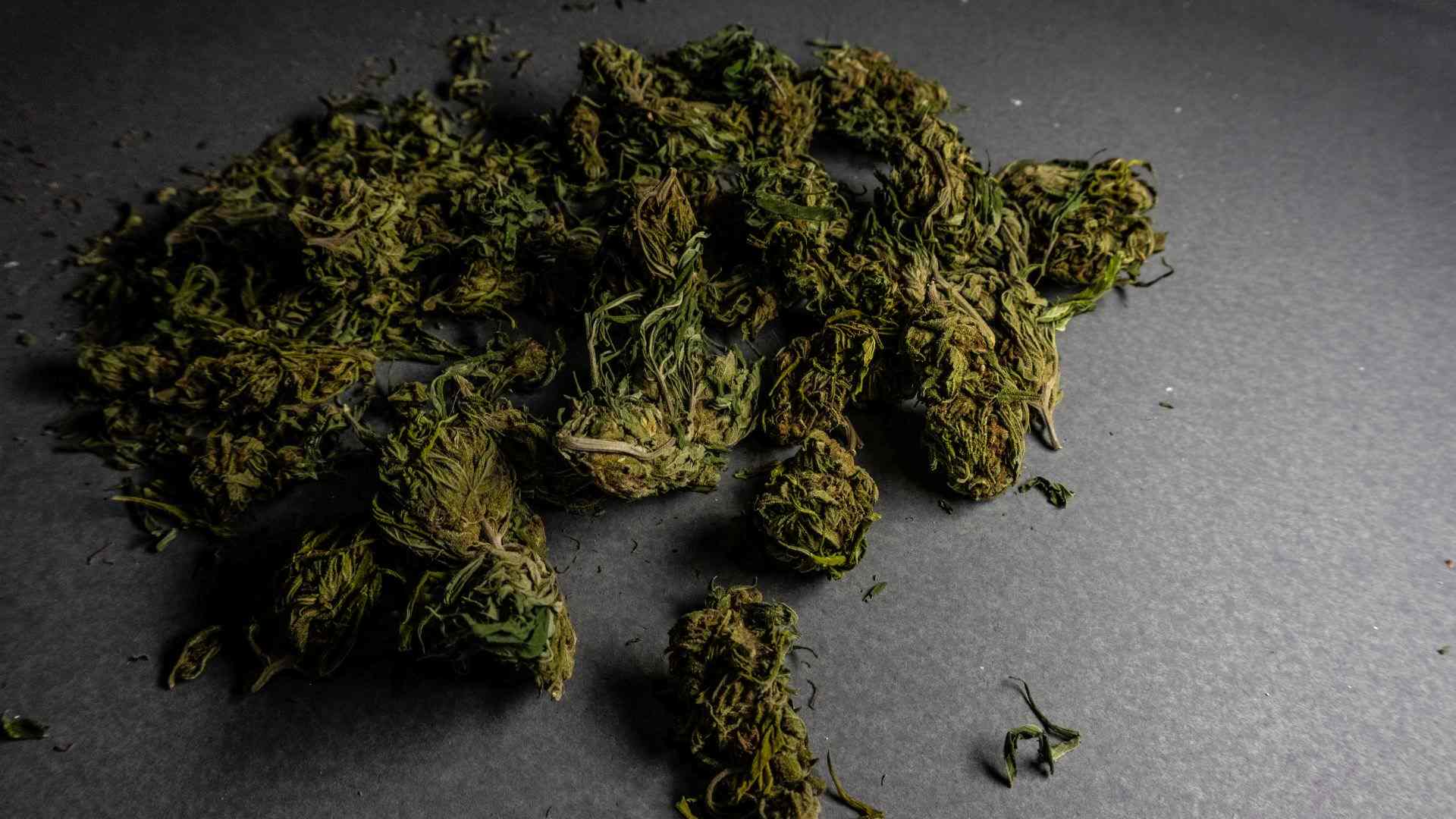
Rampage killings are on the rise, and with every harrowing news story, the world is left asking the same question – why? From university shootings to vehicular assaults, these acts of violence seem senseless. However, broadcaster Peter Hitchens offers a controversial perspective on Drugs and Rampage Killings that’s gaining attention. Speaking on the Alas Vine & Hitchens podcast, he suggested that drugs, such as cannabis, could be a catalyst behind many of these attacks.
Could the increase in drug normalisation really hold the key to addressing these tragic events? Let’s take a closer look at the arguments being made.
Drugs and Rampage Killings
The Western world has witnessed an alarming surge in rampage killings in recent decades. Defined as short, violent outbursts targeting multiple victims, these attacks often strike at soft targets, leaving communities shaken. Hitchens argues that one of the big changes fuelling this is the widespread acceptance and use of mind-altering drugs, particularly cannabis.
Pointing to events in Liverpool where a seemingly drug-affected driver mowed down football fans, Hitchens explained, “It never used to happen. What has fundamentally changed since the 1950s and 60s?” For him, the answer is clear – the increasing prevalence of drug culture.
He further stated, “There is a reluctance to admit any connection between the use of marijuana and insane violence.”
The Role of Drugs in Mental Instability
Drugs like cannabis, Hitchens claims, affect individuals in profound ways, increasing the potential for violent outbursts. He highlighted that rampage killers often have histories involving drugs such as SSRIs, steroids, or marijuana. For instance, studies supporting his stance point to correlations between heavy drug usage and increased aggression or psychosis.
Despite growing scientific evidence, he argues there is societal resistance to making the link between drugs and these violent acts. Reasons range from the powerful influence of drug lobbies to societal enthusiasm for legalisation.
Mixed Evidence on Cannabis and Violence
Metanalyses in the United States have attempted to scrutinise this relationship. While some studies have shown slight links between cannabis use and violent behaviour, others paint a different picture. For example, certain studies suggested that violence decreased in areas where cannabis dispensaries became operational.
However, proponents of Hitchens’ argument believe that these findings don’t address the long-term psychological impacts of heavy usage. “People think that because cannabis isn’t chemically addictive, it isn’t dangerous,” notes podcast co-host Sarah Vine. “But it is highly psychologically addictive – I’ve had friends who went mad trying to quit.”
Comparisons With Other Nations
Hitchens argues that Western societies can learn from nations such as South Korea and Japan, where rampage killings are almost non-existent. Why? These countries enforce strict laws around drug possession, making misuse culturally and legally unacceptable.
“In South Korea, the possession of marijuana is still considered a crime. Public figures caught with it not only go to jail but are also discredited,” he explained. “These societies reject the propaganda that marijuana use is victimless.”
Hitchens believes that such punitive measures could prevent the family-wide tragedies drug misuse often causes. “It is not a victimless crime – the families of individuals who suffer permanent injury due to drugs carry grief for decades.”
Counterarguments on Drug Policy and Rampage Killings
Not everyone agrees that drugs alone are the root of the problem. Sarah Vine, while acknowledging the mental health effects of cannabis, argued that it’s often psychotic individuals who gravitate towards drug use rather than drugs causing the psychosis.
She also highlighted that criminalising soft drugs may unintentionally incentivise the creation of black markets, leading to more potent and harmful substances being sold. It’s a delicate balancing act for policymakers.
Society’s Reluctance to Confront the Issue
At its core, the debate on Drugs and Rampage Killings reflects a larger societal reluctance. Advocates for cannabis legalisation often downplay its potential mental health risks, focusing on economic benefits or medicinal applications. Hitchens urges society to take a more hardlined approach, saying, “The people who promote it should face the shame of ruining lives. It should be punished and prohibited.”
Addressing the issue of Drugs and Rampage Killings demands a broader societal conversation and thorough investigation into the root causes. However, for Hitchens, the starting point is unmistakable: drug legislation must acknowledge and address the significant harm that substances like cannabis can cause.
Hitchens’ views might be provocative for some, but they challenge us all to consider how far drug normalisation could be influencing violence in communities worldwide.
Rampage killings leave devastation in their wake, ripping apart families and communities. While there may be various social and psychological factors at play, drugs like cannabis should not escape scrutiny in the context of Drugs and Rampage Killings.
Source: dbrecoveryresources
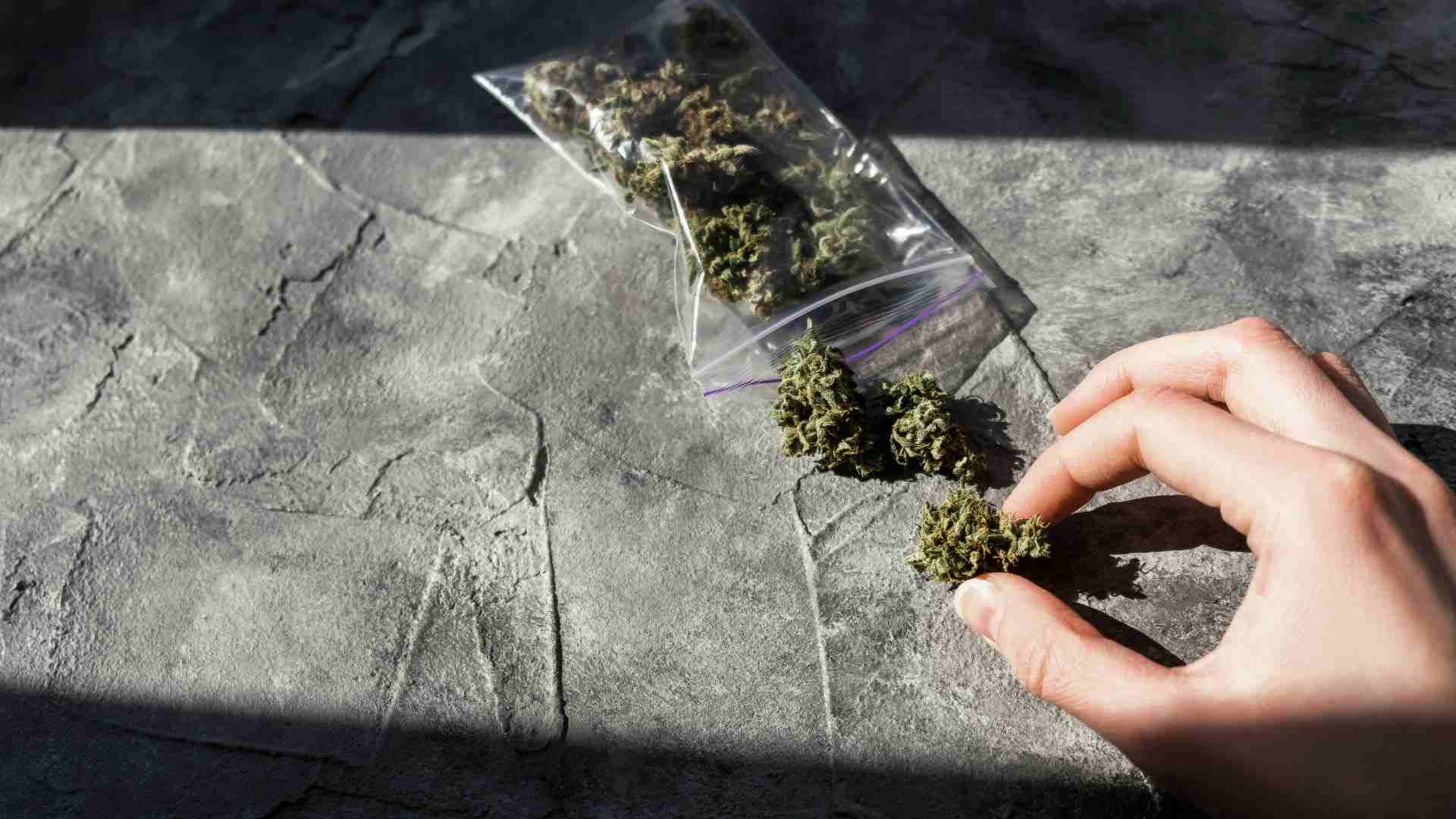
The debate around cannabis decriminalisation in the UK has been reignited following the release of the independent London Drugs Commission’s report on UK drug policy. The report, which evaluates the effectiveness of current laws on substances such as cannabis, has sparked significant discussions among policymakers, law enforcement, and public health officials alike.
Central to the debate is the commission’s recommendation to decriminalise the possession of small amounts of cannabis. While this idea may appear progressive to some, many experts, including the Association of Police and Crime Commissioners’ (APCC) joint leads on Addictions and Substance Misuse, PCCs Joy Allen and David Sidwick, remain firmly opposed. Here’s why.
Cannabis Causes Harm to Users and Communities
To understand the arguments against decriminalisation, it’s crucial to first acknowledge the harmful effects of cannabis. The London Drugs Commission itself recognises cannabis as a harmful and addictive substance. Statistics published in recent studies show that one in ten users develop a dependency, with cannabis being the leading drug for which young people in the UK seek addiction treatment, accounting for 87% of cases.
Additionally, extensive research links cannabis consumption to serious mental health problems. Conditions such as psychosis and schizophrenia are particularly prevalent among frequent users, especially in young men. To compound these issues, legalising or decriminalising drugs like cannabis sends an implicit message that some drug use is benign, contradicting evidence to the contrary.
Lessons from New York’s Experience with Cannabis Legalisation
Supporters of cannabis decriminalisation in the UK often argue that changing the law would reduce illegal markets and improve public safety. However, evidence from jurisdictions that have liberalised their drug laws paints a starkly different picture.
New York City legalised personal cannabis use in March 2021, but the results have been anything but promising. Reports reveal widespread confusion among citizens and law enforcement over what is legally permissible. Meanwhile, the city’s illicit market has not disappeared; in fact, many users still turn to illegal dealers due to competitive pricing and stronger product offerings. The expected economic benefits have failed to materialise, and long-term harm, including increasing rates of drug-related deaths, continues to rise.
Walking the streets of New York today, drug deals occur openly, and police intervention is rare unless transactions occur directly in their presence. Similar outcomes could emerge in London if cannabis decriminalisation is implemented, posing significant risks for public health and safety.
The Risks of Cannabis Decriminalisation in the UK
Decriminalising cannabis in the UK carries numerous risks. First and foremost, it is likely to increase usage rates by normalising the substance. Higher consumption inevitably leads to greater health risks and places additional strain on public health services.
Furthermore, decriminalisation will allow criminal supply chains to thrive. Rather than being eradicated, illegal markets will persist, bringing with them violence, anti-social behaviour, and the exploitation of vulnerable individuals, including children. This approach would also leave law enforcement grappling with complexities, such as defining “small amounts” or distinguishing between natural cannabis and synthetic varieties.
Public opinion among UK police reflects these concerns. According to polling by the Centre for Social Justice, two-thirds of officers believe cannabis is effectively decriminalised already, with many arguing that policing the possession of the drug should instead focus on education and support.
The Importance of a Balanced Drug Policy
Rather than decriminalising cannabis, policymakers should be exploring more robust approaches to tackling illegal drugs within the UK. The APCC has long argued for a balanced, evidence-based approach grounded in three key pillars:
Enforcement: Maintain strong deterrents against possession and distribution.
Prevention: Educate people, particularly young individuals, on the harmful effects of cannabis.
Treatment: Increase access to support programmes that can guide users onto a path of rehabilitation and recovery.
This approach has formed the foundation of government policy for years, ensuring a balance between public safety, personal accountability, and effective harm reduction strategies. The focus should remain on referring users to treatment and education programmes rather than resorting to a narrowly punitive model.
Why the UK Shouldn’t Follow New York’s Path
The London Drugs Commission’s push for cannabis decriminalisation risks taking London down the same perilous path as New York. Instead of following this example, the UK should strengthen its existing efforts to combat illegal drug use, maintain law and order, and protect public health.
Our communities deserve safe streets, free from violence and harm inflicted by drug-related crime. Decriminalising cannabis would undermine these priorities, creating confusion and exacerbating challenges already faced by law enforcement and healthcare providers.
The bottom line is clear. The UK should not cave to calls for liberalising cannabis laws, but rather focus on robust, effective solutions to tackle its illegal use.
Source: dbrecoveryresources

California has unveiled its largest-ever operation targeting illegal cannabis in the state. During a carefully coordinated multi-agency sweep, which was spearheaded by the Unified Cannabis Enforcement Task Force, authorities seized £123.5m worth of unlicensed cannabis across the Central Valley. This significant bust has sent shockwaves through the illicit cannabis market, while also reinforcing the state’s unwavering commitment to strengthening the legal industry.
Furthermore, this historic operation highlights the high stakes involved in the ongoing fight against California’s illegal cannabis activity. It also underscores the urgent need for continued enforcement efforts to not only protect the state’s regulated market but also safeguard its environment.
Largest Operation Against Illegal Cannabis
The weeklong enforcement effort, which took place in early May 2025, marked a significant escalation in California’s fight against illegal cannabis operations. More than 200 officers, representing 15 local, state, and federal agencies, collaborated to execute an impressive 71 search warrants across Kern, Kings and Tulare counties, covering a vast area of approximately 4,600 square miles.
This massive undertaking yielded staggering results:
105,700 illicit cannabis plants and 22,057 pounds of processed cannabis were seized.
Uncovered hazardous activity involving banned or highly restricted pesticides at eight locations.
A number of firearms were confiscated, and multiple arrests were made with prosecutions now pending.
The operation sent a strong message to those involved in illegal cultivation. It showcased California’s determination to maintain the integrity of its legal cannabis market, with Governor Gavin Newsom lauding the success of the task force’s efforts.
A Pledge to Protect California’s Cannabis Industry and Environment
Governor Gavin Newsom has continued to champion the cause against California’s illegal cannabis trade. Following this monumental crackdown, Newsom stated:
“Illegal cannabis operations undermine California’s legal market, jeopardise public safety, and devastate sensitive ecosystems. This operation proves we won’t stand by idly while transnational criminal organisations threaten our people, workers, and environment.”
Nicole Elliott, Director of the Department of Cannabis Control (DCC), echoed these sentiments, stressing the importance of fair competition for legal operators. Illegal cultivation negatively impacts genuine businesses, weakens environmental protections, and circumvents laws designed to safeguard communities.
The dangers of such an industry go far beyond economics. Many sites uncovered during the operation employed hazardous pesticides and chemicals, presenting a toxic cocktail for California’s fragile ecosystems and posing serious risks to consumers who unknowingly purchase contaminated products.
The Role of the Unified Cannabis Enforcement Task Force
Since its establishment in 2022, the Unified Cannabis Enforcement Task Force has been pivotal in California’s ongoing efforts to combat illegal cultivation and trade. The task force’s cross-agency collaboration has allowed for decisive actions protecting public safety and the environment while securing the thriving legal cannabis industry.
To date, the task force has achieved several significant milestones:
Executed over 500 warrants, resulting in the seizure of £650m worth of unlicensed cannabis.
Confiscated 190 firearms and recovered over £1m in illegal cash flow.
Dismantled operations spanning 800,000 illegal plants and 220 tons of processed cannabis.
The DCC and the California Department of Fish and Wildlife (CDFW) co-chair the enforcement efforts. The DEA, California National Guard, and local sheriff’s offices also support these operations. Together, these organisations are an impenetrable shield for both communities and businesses intent on following proper regulatory practices.
Charlton H. Bonham, Director of the CDFW, highlighted the collaboration’s significance in protecting the state’s natural beauty. “Our united efforts ensure California’s ecosystems and legal cannabis operations are safeguarded for future generations,” he remarked.
Why Illegal Cannabis Is Still a Threat
California boasts the largest regulated cannabis market in the world, supporting fair wages, public education, and sustainable environmental initiatives. However, the persistence of illegal activity remains a direct threat to this balance.
Illegal cultivation not only jeopardises water supplies by diverting resources but also hurts the state economically by avoiding taxes, estimated to cost the Treasury millions annually. Fair players abiding by California’s stringent cannabis regulations often find themselves squeezed by the downward price pressures stemming from illegal operators.
By holding illicit actors accountable and encouraging consumers to purchase from legal sources, California is working to level the playing field and ensure legal businesses receive the support they deserve.
Looking Ahead
California’s crackdown on illegal cannabis highlights priorities familiar to businesses across sectors. Protecting legitimate players and ensuring safe operations is central to sustaining industries, whether cannabis or any other.
The Unified Cannabis Enforcement Task Force’s strategic and coordinated approach leaves a lasting example of how tackling illicit markets efficiently can yield positive, definitive change.
Their success serves as both a stark warning to criminals and reassurance to law-abiding businesses that California stands firm in its commitment to safeguarding public health, the environment, and ethical enterprise.
Officials remain determined to reinforce the global footprint of the legal cannabis industry, ensuring a future where California continues to stand out as a beacon of innovation, fairness, and responsibility.
Source: ivn
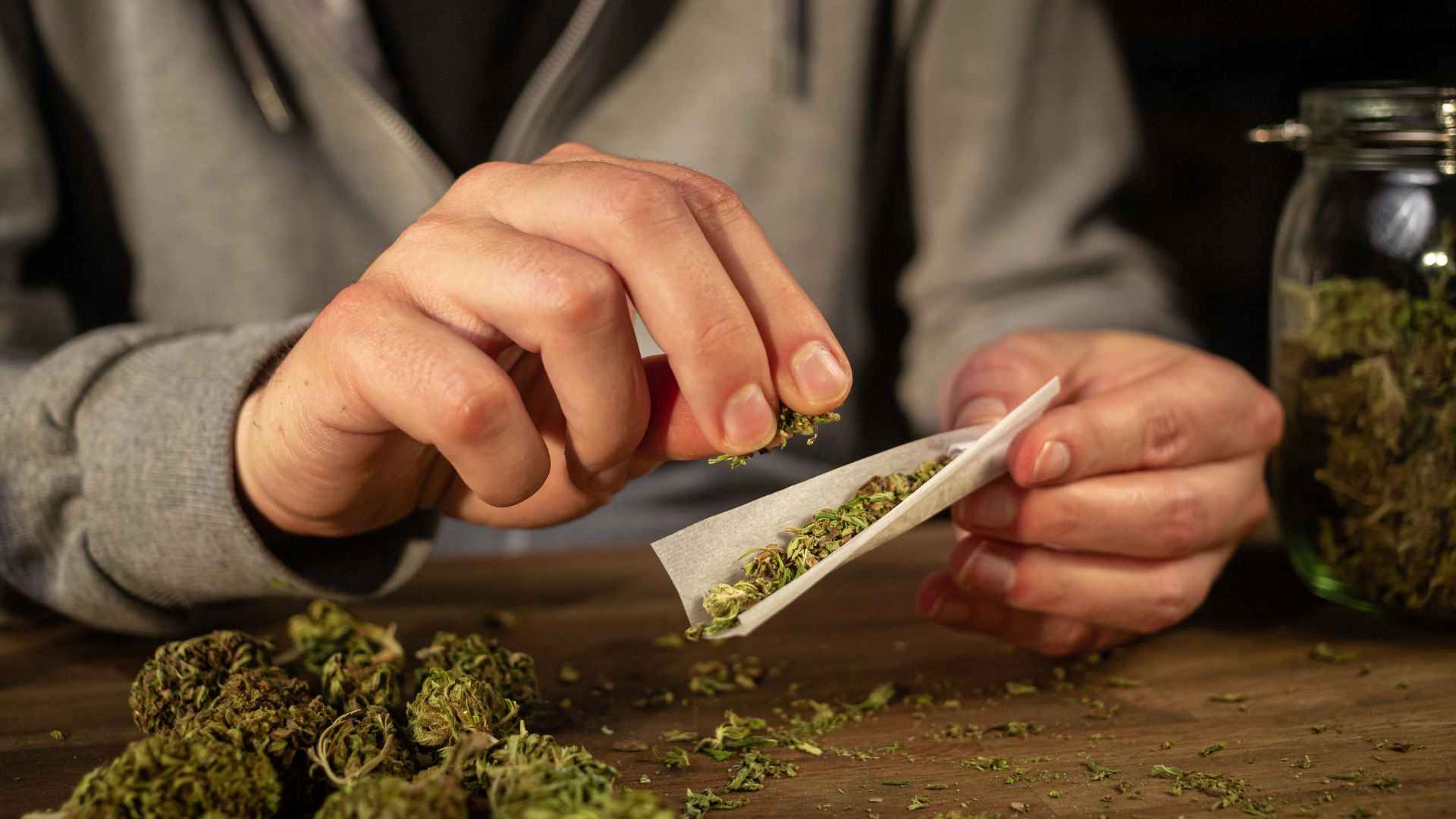
The conversation surrounding cannabis policy in the UK continues to be a contentious topic for lawmakers, health advocates, and the public alike. With Sadiq Khan’s calls for the partial decriminalisation of cannabis possession, the debate around decriminalising cannabis in the UK has reached a new inflection point. While some argue that the current approach to cannabis creates greater societal harm, others strongly advocate for reclassification that treats the drug as a more severe substance.
Cannabis policy in the UK is undeniably polarising, and voices on both sides provide compelling arguments. This article breaks down the key aspects of Khan’s position, the findings of the London Drugs Commission, and the viewpoints of critics to give you a comprehensive understanding of this heated subject.
London Drugs Commission Report Prompts Controversy
Mayor Sadiq Khan’s endorsement of partial decriminalisation stems from a year-long study conducted by the independent London Drugs Commission. The Commission collaborated with academics from University College London and gathered insights from over 200 experts and academics worldwide.
The report suggests that the current approach to criminalising cannabis possession causes more harm to society than the drug itself. Furthermore, the study highlights that policing practices disproportionately target black communities through stop-and-search, leaving what the report describes as “damaging, long-lasting consequences for individuals and society.”
The report stops short of advocating full legalisation. Instead, it recommends ending criminal penalties for the possession of small amounts of natural cannabis for personal use. However, it explicitly excludes synthetic cannabis from these recommendations and maintains that the production and distribution of the drug should remain under police scrutiny.
Lord Falconer KC, who led the commission’s work, said, “It is clear that a fundamental reset is required. Legalisation is not the answer. The criminal justice system needs to focus on dealers, not users, and there needs to be much more education on the risks of cannabis use.”
Arguments Supporting the Call for Change
Supporters of the decriminalisation effort argue that the current classification of cannabis as a Class B drug under the Misuse of Drugs Act is disproportionately harsh relative to the harm posed. For example, stop-and-search practices targeting cannabis possession are often criticised for eroding trust in law enforcement within certain communities.
The commission also mentions potential benefits of policy changes, such as increased tax revenues and decreases in criminalisation rates. However, it emphasizes that governments must tackle public health risks and invest in education to help the public fully understand the negative effects of cannabis.
Sadiq Khan champions the report’s recommendations, stating, “The current sentencing for those caught in possession of natural cannabis cannot be justified given its relative harm and people’s experience of the justice system.”
Opposing Views on Decriminalising Cannabis in the UK
Critics of decriminalisation, however, argue that cannabis poses significant risks to both public health and societal well-being. David Sidwick, one of the leading voices against decriminalisation, suggests that reclassifying cannabis to Class A would better reflect its dangers. Sidwick points to research citing links between cannabis use and mental health problems, birth defects, and other severe health risks.
One of the strongest testimonies against cannabis came from Janie Hamilton, a grieving mother who attributes her son’s long battle with schizophrenia and eventual death to cannabis use. Hamilton advocates for a tougher response, stating, “We watched our son die needlessly, cannabis having stolen his life three times over.”
Additionally, Sidwick has highlighted that gateway drugs like cannabis often lead users toward more harmful substances. He calls for an increased focus on prevention and education to deter usage before it escalates.
The Polarised Future of UK Drug Policy
The diverging stances on cannabis underline the complexity of drug policy in the United Kingdom. Advocates for decriminalisation argue for reforms based on social justice and evidence-driven recommendations, while opponents demand stronger enforcement and awareness of the health dangers associated with the drug. The debate around decriminalising cannabis in the UK continues to fuel discussions on the best path forward.
The Home Office remains firm on its position that cannabis will not be reclassified. A spokesperson stated, “We have no intention of reclassifying cannabis from a Class B substance under the Misuse of Drugs Act.”
Source: dbrecoveryresources
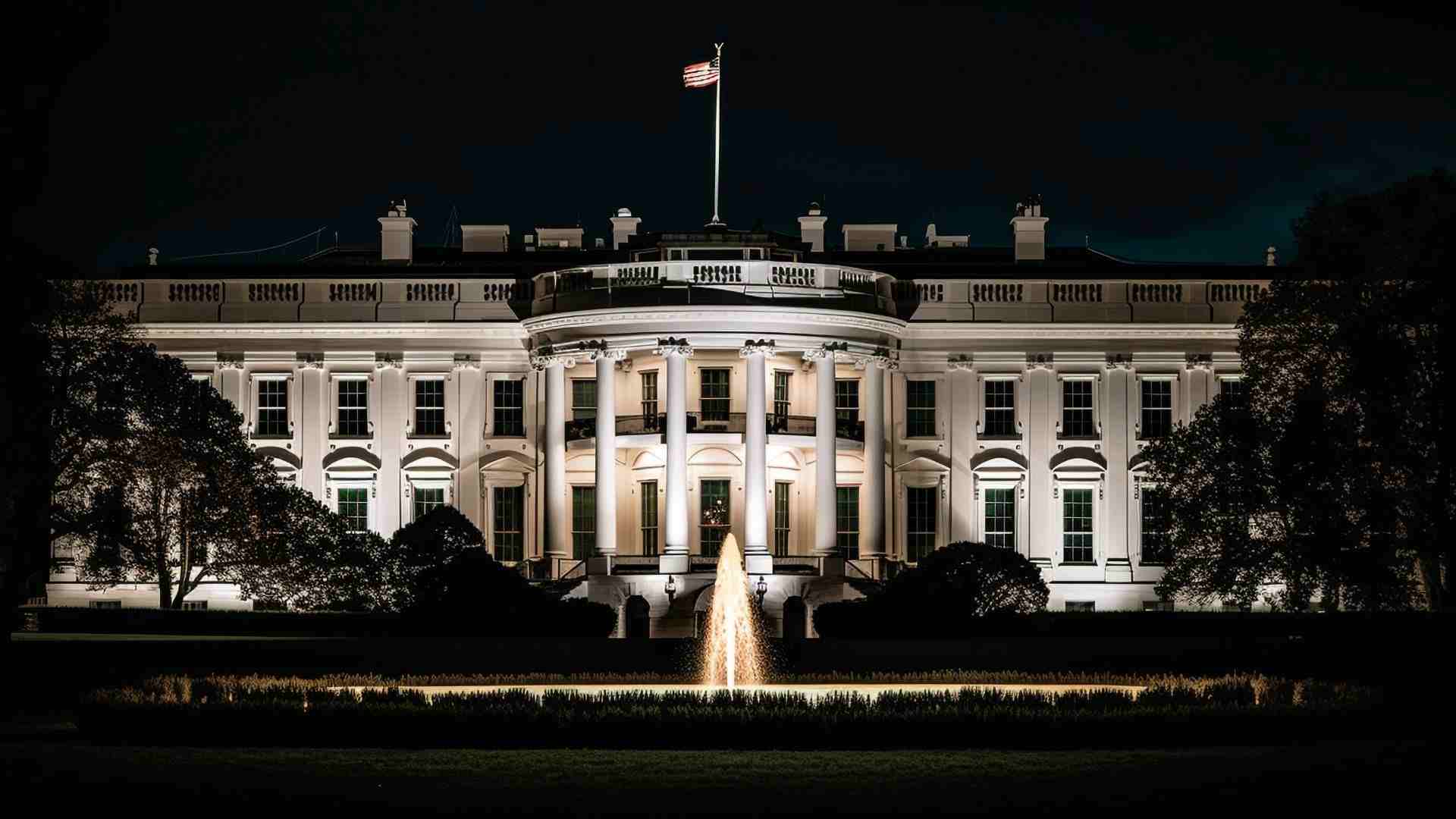
The Trump administration’s drug policy outlines an ambitious strategy to tackle the national drug crisis, which it describes as a significant public health and national security threat. With the opioid epidemic reaching what it terms “epidemic proportions,” the focus is on combating illicit fentanyl, multi-drug challenges, and complex addiction issues. Released by the Office of National Drug Control Policy, this blueprint reflects a determined effort to address the crisis through a balance of punitive measures, international collaborations, and innovative solutions.
Examining the National Drug Crisis
The administration has characterised the crisis as a “scourge” on American society, responsible for thousands of deaths annually. At the heart of its concerns is the opioid epidemic, with illicit fentanyl being the primary driver. However, other substances, including methamphetamines, cocaine, heroin, and synthetic adulterants like xylazine, are also part of a wider, multi-layered issue. This complex reality underscores the need for a comprehensive and multi-faceted approach.
Immediate Steps Taken to Combat the Crisis
The Trump administration has already enacted a series of executive orders aimed at disrupting drug trafficking organisations (DTOs). Critical actions include:
- Designating eight international cartels as Foreign Terrorist Organisations (FTOs).
- Introducing new authorities to target suppliers, distributors, and financiers.
- Using economic pressure to demand reforms from countries supplying illicit drugs or precursor chemicals.
These decisive measures showcase the administration’s commitment to stemming the flow of illicit substances at their source and ensuring accountability across international borders.
A Strategic Approach to Supply Chains and Border Security
Targeting Global Supply Chains
Highlighted within the policy is a strong emphasis on tackling global supply chains that facilitate drug trafficking. Plans include partnering with nations producing precursor chemicals, holding non-compliant countries accountable, and leveraging economic tools to enforce compliance. Intelligence and cooperation on an international scale remain centrepieces of this strategy.
Strengthening Border Security
DTOs and FTOs exploit vulnerabilities in border security to smuggle drugs into the United States. The proposed measures involve:
- Deploying advanced technologies and increased resources at borders.
- Enhancing punitive measures through legal and economic tools.
- Coordinating efforts across federal, state, and local levels.
Through these steps, the administration aims to curb the movement of illicit substances before they reach communities.
Key Policy Priorities of the Trump Administration Drug Policy
Reducing Overdose Fatalities
Confronting the staggering number of overdose deaths is a top priority. Fentanyl, a potent synthetic opioid, is at the forefront of this battle. Proposed steps include:
- Making life-saving naloxone widely available.
- Facilitating access to emergency medical services.
- Imposing the harshest penalties on individuals responsible for fatal overdoses.
Securing the Global Supply Chain
Acknowledging that this is a global issue, the administration seeks to engage in multilateral partnerships with source countries, share intelligence with the private sector, and ensure all transport modes, including air, sea, and land, are safeguarded.
Protecting Borders and Communities
Protecting communities involves more than stopping substances at the border. It extends to dismantling criminal organisations operating within the country. Task forces such as the Homeland Security Task Forces (HSTFs) are cited as vital “force-multipliers” in this effort.
Preventing Youth Drug Use
The policy document underscores prevention among youth, detailing community-centred and school-based strategies. Programmes include multimedia campaigns to educate young Americans about:
- The dangers of illicit drug use.
- The availability of treatment and recovery services.
- Tools to foster resilience and prevent initiation.
Expanding Treatment Options
Treatment and recovery are also central to the strategy. Plans focus on integrating mental health and clinical services, supporting recovery communities, and increasing access to medications for opioid use disorder (MOUD).
Encouraging Research and Innovation
Innovation plays a crucial role in achieving these goals. Techniques involving artificial intelligence (AI) and machine learning (ML) support trend-monitoring and data-driven decision-making. Partnerships between the public and private sectors will aid in rapidly responding to emerging threats.
Coordinating and Monitoring Efforts for Success
The Trump administration’s drug strategy highlights the need for coordinated efforts between stakeholders, including law enforcement, healthcare providers, community organisations, and individual citizens. Key measures include:
- Formal mechanisms for performance monitoring.
- Continuous evolution of policies to address changing threats.
- Expanded intelligence-sharing between domestic and international authorities.
The Role of Technology and Public Health Integration
A significant focus is placed on adopting sophisticated technology such as AI to improve data collection, analysis, and border detection systems. Public health is integrated into the broader strategy through campaigns, training, and ensuring access to life-saving resources like naloxone.
A Balanced and Comprehensive Philosophy
The Trump administration drug policy reflects a nuanced understanding of drug addiction by combining:
- Punitive actions such as prosecution and targeted sanctions.
- Public health initiatives for prevention, education, and recovery.
- International cooperation to prevent the production and trafficking of illicit substances.
- State-of-the-art technology for better implementation and accountability.
This multifaceted strategy positions the policy as both a compassionate and firm response to an ongoing national emergency. Learn More
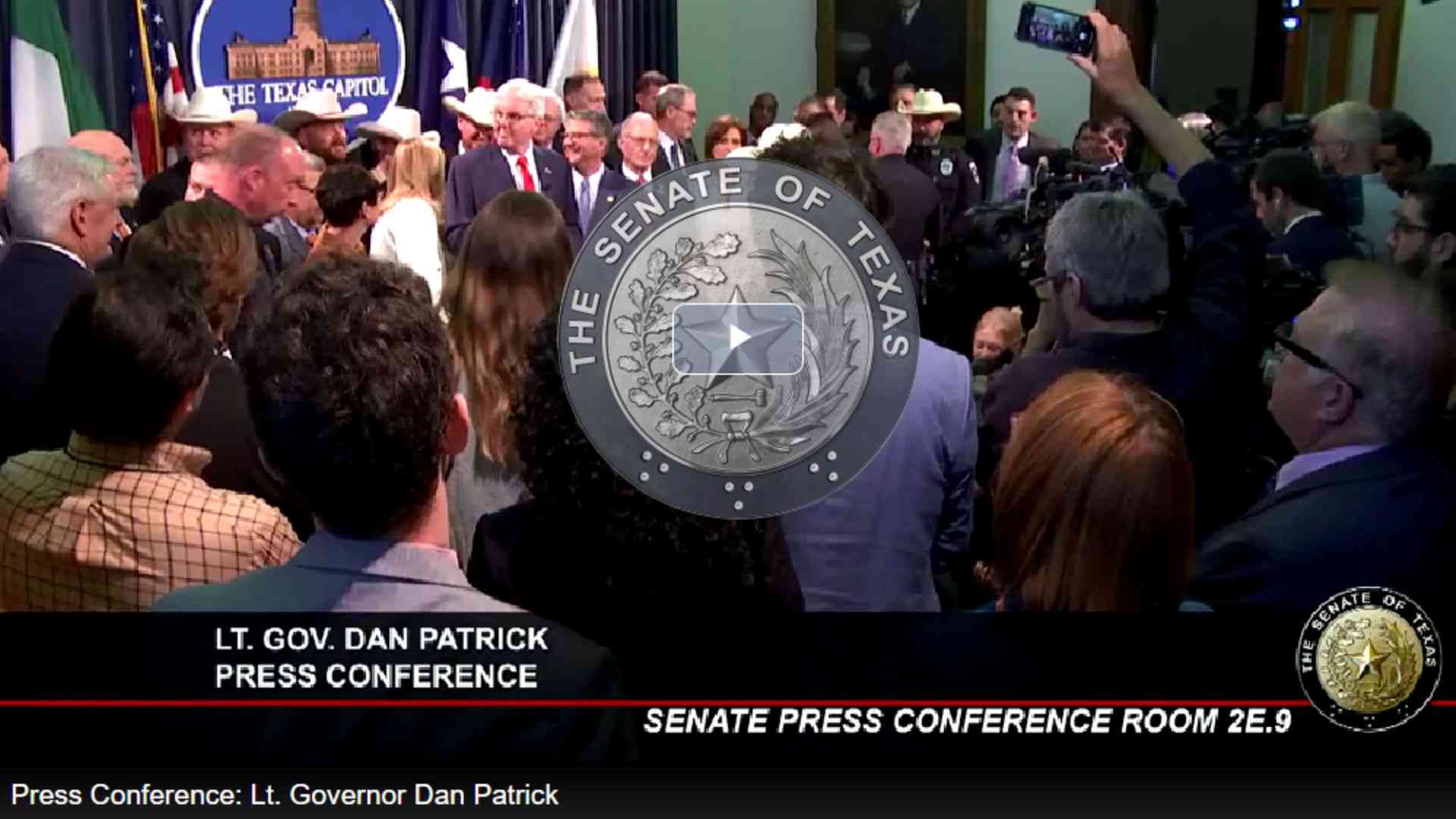
Texas lawmakers take decisive action against unregulated cannabis products that exploited hemp legislation loopholes. Texas legislators have successfully passed Senate Bill 3, implementing the Texas cannabis product ban. This ban targets a wide range of unregulated cannabis products that have flooded the state through legal loopholes in hemp legislation. The Texas cannabis product ban addresses what officials describe as a public health crisis that has particularly targeted young people and resulted in serious health consequences, including deaths.
The Scope of the Problem
Over the past three years, approximately 8,000 shops have opened across Texas selling products containing Delta-8 and Delta-10 THC compounds. Sellers have marketed these products with colorful packaging and candy-like appearances, selling them largely without permits and often within 1,000 to 2,000 feet of schools.
“You talk about jobs being lost. You talk about a big industry, a big industry selling all of this to kids,” said Lieutenant Governor Dan Patrick, displaying various products during the press conference. “This bag sells for $40, big profit items.”
The products range from gummy candies to chocolate bars, with some containing extremely high THC concentrations. One example cited contained 16,000 milligrams of THC, while individual packages can sell for $40 to $90, making them highly profitable for retailers. Patrick noted one particular product: “This little bag of jellies, mango peach, $90 for a bag. Send you sky high.”
Unknown and Dangerous Contents
A critical concern highlighted by lawmakers is the complete lack of transparency in these products’ contents. Labels are frequently misleading or entirely inaccurate—one product labeled as containing 300 milligrams actually contained potentially 1,200 milligrams when properly calculated.
“I’d be happy to share it with you, but I don’t know what’s in it because no one knows what’s in it. It can poison you, not just children, but adults,” emphasized Lieutenant Governor Dan Patrick during a press conference announcing the ban. He challenged attendees directly: “Would you buy anything off the shelf that you didn’t know what was in it that could change your whole mental state for the rest of your life?”
Patrick continued, highlighting the labeling issues: “The milligrams, if you look at this one says 300 milligrams, but if you add up what it really says, it could be 1200 milligrams. Nobody. This is all phony junk.”
Tragic Consequences
The legislation was motivated by documented cases of severe harm, including the death of a 22-year-old who consumed a product called “wedding cake” and subsequently stepped in front of a train. Officials describe testimonies of users experiencing paranoia, schizophrenia, and other serious mental health issues.
“We had horrendous testimony of one 22 year old who bought this. I don’t know what product it was. I think she said wedding cake. He stepped in front of a train and got run over, killed,” Patrick recounted.
Chief Jeff Burt of Tomball Police, representing the Texas Police Chiefs Association, drew parallels to California’s experience with unregulated cannabis products, warning that Texas was heading down a similar path of “unregulated havoc.”
Exploitation of Hemp Legislation
Loopholes in the 2019 hemp legislation, originally intended to develop an agricultural industry for fiber, construction materials, and wood substitutes, created the crisis. Senator Charles Perry, who championed the ban, explained that bad actors exploited these loopholes to create a drug distribution network.
“In essence, the loopholes for Delta 8 and Delta 10 that were created around the natural health hemp of Delta 9, they have come into this state and used our state to be a drug dealer,” Perry stated. “And we will not let the state of Texas be in the drug business of making these products available on the shelves.”
Perry noted that despite warnings as early as 2019 about potential misuse, it took several legislative sessions and documented harm to build sufficient support for the ban. “In 19, we had an opportunity to develop an ag industry that would provide a product that served a real need in the way of fiber, construction, substitute for wood and lumber. And I warned at that point in 19 that if this stuff was to happen, we would get rid of it,” he explained. “It took about four years, unfortunately, and lives lost and lives ruined to get it to the level and awareness that I was able to be able to bring it to that level for the legislature to fully understand.”
Protecting Legitimate Hemp Industry
Lawmakers emphasized that the ban specifically targets intoxicating products while preserving legitimate agricultural hemp operations. Farmers in Texas actually produced only 184 acres of hemp for testing in 2024 out of 1.25 million available acres, indicating minimal impact on legitimate agricultural interests.
“Here’s the facts that nobody wants to talk about,” Perry said, addressing concerns about harming agriculture. “There was 184 acres, I believe, of hemp produced in text tested in Texas in 2024. Over 1.2 125 million acres available. So when we say we killed the hemp industry for the ag business, first of all, we didn’t touch the ag code.”
He continued: “If you’re under compliance with the federal ag law, and you’re doing stuff for fiber and stock and production for those other products that we hope to do, you didn’t get affected by this. But if you’re doing hemp that ultimately ended up as a delta eight or a delta 10 are hot, going forward, you’re out of business. And you should be.”
Law Enforcement Challenges
Police Chief Burt called the situation “the most insidious kind of drug deal” because sellers openly place these products in gas stations alongside legitimate snacks, which makes enforcement extremely difficult. The inability to cost-effectively test these products has created additional challenges for law enforcement.
“This right in front of you is a drug deal. That’s all it is,” Burt said, referring to the products displayed during the press conference. “And it’s the most insidious kind of drug deal because it isn’t somebody that sneaks off when a police officer sees him or her and runs into a runs into an apartment and we go, we go chasing. They’re selling this in gas stations right next to Snickers and Cheetos.”
Chief Burt, drawing from his 24 years of experience including time with LAPD narcotics units, warned about the parallels to California’s experience: “I lived in Los Angeles. I served with the LAPD, worked in several narcotics units, and witnessed the legalization of marijuana, followed by the influx of hemp products, gummies, edibles, and other items, which created unregulated havoc and left the state still grappling with its repercussionAnd in Texas, we are better than that.”
Texas Bans Harmful Products, Highlighting Bipartisan Action
The ban will take effect in September, making all displayed products illegal. Officials closed these dangerous loopholes with relief but also felt saddened that losing and damaging lives prompted them to act.
“We have protected people going forward that will never know what we did for them,” Perry reflected, acknowledging that many Texans will never realize they were protected from products they had “no idea what they were going to be doing” to their health. He added, “I’m sad we’re here for a lot of reasons. But I’m encouraged going forward, that this stuff’s gone.”
The bipartisan support for the legislation—described by Perry as reflecting “a conscience of 181 members”—demonstrates the severity of the crisis and the commitment to protecting public health over industry profits. As Perry concluded: “The vote to ban stuff that arguably nobody can argue against is harmful. It reflects a conscience of 181 members, the majority bipartisan in both chambers, that there is a limit.”
Source: Texas Senate Video: Press Conference: Lt. Governor Dan Patrick

The legalisation of recreational cannabis in Washington State represents a significant shift in drug policy, with far-reaching consequences for public health, social dynamics, and policy frameworks. Following the voters’ decision in November 2012 and the subsequent opening of cannabis retail stores in July 2014, researchers have dived deep into measuring the outcomes of this historic move. This article takes a closer look at the cannabis effects in Washington and how retail availability plays a pivotal role in shaping health and societal outcomes.
Cannabis Legalisation in Washington
Legalisation of recreational cannabis signalled not just a policy reform but also a new cultural and economic reality for Washington residents. Backed by a stringent regulatory framework and funding for comprehensive research, the landscape of cannabis consumption and its impact began to emerge in new clarity.
From 2014 to 2016 alone, the prevalence of cannabis use increased markedly, from 25.0% to 31.7% among adults. Intriguingly, adults aged 50 and older represented a significant portion of this increase. While cannabis legalisation aimed to introduce regulation and safety, the effects of increased consumption raise complex questions about its broader implications.
Cannabis Retail Stores and Economic Disparities
One of the less immediately visible outcomes of cannabis legalization, however, was the noticeable clustering of retail stores in economically disadvantaged areas. Moreover, research has highlighted that proximity to cannabis retail outlets is closely linked to more frequent use, thereby sparking concerns about access inequality.
In addition, socially disadvantaged neighborhoods often experience higher exposure to products associated with potential harm and addiction. Consequently, this creates a new layer of challenges in achieving equitable outcomes. Therefore, these findings underscore the pressing need for thoughtful and comprehensive policy approaches to guard against such unintended consequences.
Secondhand Harms and Their Social Impact
Cannabis legalisation’s ripple effects extended beyond individual users. Research revealed that approximately 8.4% of individuals in Washington reported secondhand harms due to others’ cannabis use. These harms ranged from strained family relationships and financial issues to incidents of harassment, assault, and impaired driving.
While cannabis’ risks when consumed directly are often discussed, these communal impacts demand greater public attention. They highlight important considerations for balancing individual freedoms with collective wellbeing.
Co-Use of Cannabis and Alcohol
The risks associated with the simultaneous use of cannabis and alcohol emerged as an essential area of study. While co-using appeared relatively common among users, it came with heightened risks, including increased instances of cannabis-related harms.
This interplay between substances underscores the need for businesses and communities to invest in educating users about such combinations’ added risks. Clear labelling and public awareness campaigns are vital for minimising harm.
Public Health Implications of Retail Store Density
A surprising finding from the research was the connection between higher cannabis store density and some unexpected public health outcomes. Data suggested lower rates of accidental and opioid poisoning mortalities in areas with greater cannabis retail availability. This aligns with emerging theories that cannabis may act as a substitute for opioid usage.
However, further investigation is needed to fully understand these dynamics, particularly given the lack of significant links between retail availability and indicators like motor vehicle accidents, homicide, or suicide rates.
Equitable Policies for the Future
The study’s results make one thing clear: cannabis legalisation in Washington has produced a mix of advantages and challenges that require ongoing monitoring and refinement. Equitable cannabis policies that shield vulnerable groups, regulate retail density, and educate the public are key to minimising harm while maximising potential benefits.
The findings also open the door for broader conversations about how to regulate cannabis responsibly, ensuring it serves its intended purposes without creating new societal harms. Continuous attention to co-use challenges, secondhand risks, and geographical disparities can guide effective future policies.
Source: Phi
